PRG420 Java Programming I
Need Help in PRG/420 Java Assignments?
We can help you if you are having difficulty with your PRG420 Assignment. Just email your assignments at support@assignmentcache.com.
We provide help for students all over the world.
-
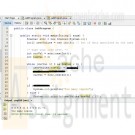
PRG/420 Week 4 Java 4.10 LAB: Middle item
Regular Price: $7.00
Special Price $3.00
PRG/420 Week 4 Java 4.10 LAB: Middle item
Given a sorted list of integers, output the middle integer. Assume the number of integers is always odd.
Ex: If the input is:
2 3 4 8 11 -1
(where a negative indicates the end), the output is:
4The maximum number of inputs for any test case should not exceed 9. If exceeded, output "Too many inputs".
Learn More
Hint: First read the data into an array. Then, based on the array's size, find the middle item. -
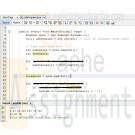
PRG/420 Week 4 Java 4.11 LAB: Output values below an amount
Regular Price: $7.00
Special Price $3.00
PRG/420 Week 4 Java 4.11 LAB: Output values below an amount
Write a program that first gets a list of integers from input. The input begins with an integer indicating the number of integers that follow. Then, get the last value from the input, which indicates a threshold. Output all integers less than or equal to that last threshold value. Assume that the list will always contain fewer than 20 integers.
Ex: If the input is:
5 50 60 140 200 75 100
the output is:
50 60 75The 5 indicates that there are five integers in the list, namely 50, 60, 140, 200, and 75. The 100 indicates that the program should output all integers less than or equal to 100, so the program outputs 50, 60, and 75. For coding simplicity, follow every output value by a space, including the last one. Such functionality is common on sites like Amazon, where a user can filter results.
Learn More -
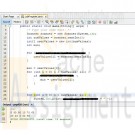
PRG/420 Week 4 Java 4.12 LAB: Adjust list by normalizing
Regular Price: $7.00
Special Price $3.00
PRG/420 Week 4 Java 4.12 LAB: Adjust list by normalizing
When analyzing data sets, such as data for human heights or for human weights, a common step is to adjust the data. This can be done by normalizing to values between 0 and 1, or throwing away outliers.
For this program, adjust the values by subtracting the smallest value from all the values. The input begins with an integer indicating the number of integers that follow. Assume that the list will always contain fewer than 20 integers.Ex: If the input is:
5 30 50 10 70 65
the output is:
20 40 0 60 55The 5 indicates that there are five values in the list, namely 30, 50, 10, 70, and 65. 10 is the smallest value in the list, so is subtracted from each value in the list.
For coding simplicity, follow every output value by a space, including the last one.
Learn More -
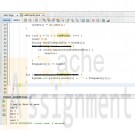
PRG/420 Week 4 Java 4.13 LAB: Word frequencies
Regular Price: $7.00
Special Price $3.00
PRG/420 Week 4 Java 4.13 LAB: Word frequencies
Write a program that reads a list of words. Then, the program outputs those words and their frequencies. The input begins with an integer indicating the number of words that follow. Assume that the list will always contain fewer than 20 words.
Ex: If the input is:
5 hey hi Mark hi mark
the output is:
hey 1
hi 2
Mark 1
hi 2
mark 1Hint: Use two arrays, one array for the strings and one array for the frequencies.
Learn More -
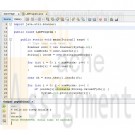
PRG/420 Week 4 Java 4.14 LAB: Contains the character
Regular Price: $7.00
Special Price $3.00
PRG/420 Week 4 Java 4.14 LAB: Contains the character
Write a program that reads an integer, a list of words, and a character. The integer signifies how many words are in the list. The output of the program is every word in the list that contains the character at least once. Assume at least one word in the list will contain the given character. Assume that the list of words will always contain fewer than 20 words.
Ex: If the input is:
4 hello zoo sleep drizzle z
then the output is:
zoo drizzleTo achieve the above, first read the list into an array. Keep in mind that the character 'a' is not equal to the character 'A.
Learn More -
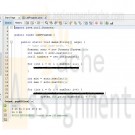
PRG/420 Week 4 Java 4.15 LAB: Elements in a range
Regular Price: $7.00
Special Price $3.00
PRG/420 Week 4 Java 4.15 LAB: Elements in a range
Write a program that first gets a list of integers from input. The input begins with an integer indicating the number of integers that follow. Assume that the list will always contain fewer than 20 integers.
That list is followed by two more integers representing lower and upper bounds of a range. Your program should output all integers from the list that are within that range (inclusive of the bounds). For coding simplicity, follow each output integer by a space, even the last one. The output ends with a newline.Ex: If the input is:
Learn More
5 25 51 0 200 33 0 50
then the output is:
25 0 33
(the bounds are 0-50, so 51 and 200 are out of range and thus not output).
To achieve the above, first read the list of integers into an array. -
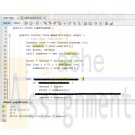
PRG/420 Week 4 Java 4.16 LAB: Two smallest numbers
Regular Price: $7.00
Special Price $3.00
PRG/420 Week 4 Java 4.16 LAB: Two smallest numbers
Write a program that reads a list of integers, and outputs the two smallest integers in the list, in ascending order. The input begins with an integer indicating the number of integers that follow. You can assume that the list will have at least 2 integers and fewer than 20 integers.
Ex: If the input is:
Learn More
5 10 5 3 21 2
the output is:
2 3
To achieve the above, first read the integers into an array.
Hint: Make sure to initialize the second smallest and smallest integers properly. -
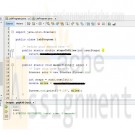
PRG/420 Week 5 Java 5.16 LAB: Step counter
Regular Price: $7.00
Special Price $3.00
PRG/420 Week 5 Java 5.16 LAB: Step counter
A pedometer treats walking 2,000 steps as walking 1 mile. Write a program whose input is the number of steps, and whose output is the miles walked.
Output each floating-point value with two digits after the decimal point, which can be achieved as follows:
System.out.printf("%.2f", yourValue);Ex: If the input is:
5345
the output is:
2.67Your program must define and call a method:
Learn More
public static double stepsToMiles(int userSteps) -
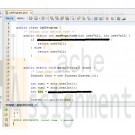
PRG/420 Week 5 Java 5.17 LAB: Max magnitude
Regular Price: $7.00
Special Price $3.00
PRG/420 Week 5 Java 5.17 LAB: Max magnitude
Write a method maxMagnitude() with two integer input parameters that returns the largest magnitude value. Use the method in a program that takes two integer inputs, and outputs the largest magnitude value.
Ex: If the inputs are:
5 7
the method returns:
7Ex: If the inputs are:
-8 -2
the method returns:
-8Note: The method does not just return the largest value, which for -8 -2 would be -2. Though not necessary, you may use the absolute value built-in math method.
Your program must define and call a method:
Learn More
public static int maxMagnitude(int userVal1, int userVal2) -
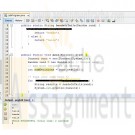
PRG/420 Week 5 Java 5.18 LAB: Flip a coin
Regular Price: $7.00
Special Price $3.00
PRG/420 Week 5 Java 5.18 LAB: Flip a coin
Write a program that simulates flipping a coin to make decisions. The input is how many decisions are needed, and the output is either heads or tails. Assume the input is a value greater than 0.
Ex: If the input is:
3
the output is:
tails
heads
tailsFor reproducibility needed for auto-grading, seed the program with a value of 2. In a real program, you would seed with the current time. In that case, every program's output would be different, which is what is desired but can't be auto-graded.
Note: A common student mistake is to create an instance of Random before each call to rand.nextInt(). But seeding should only be done once, at the start of the program, after which rand.nextInt() can be called any number of times.
Your program must define and call the following method that returns "heads' or 'tails".
Learn More
public static String headsOrTails(Random rand)






